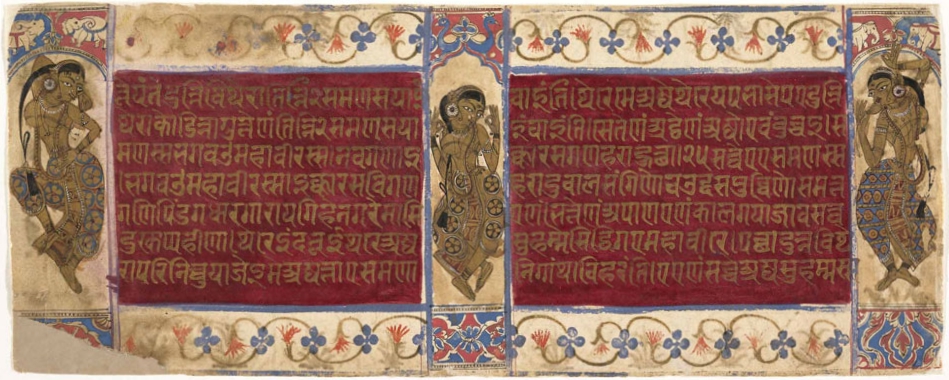Metropolitan Museum of Art Features Exhibition of Jain Manuscript Painting
NEW YORK, NY.
Jainism is the least well known of India’s traditional religions, yet its ancestry predates Buddhism and it rivals Hinduism in its claim to be India’s oldest continuously practiced faith. Its historical founder, Mahavira (ca. 540–468 b.c.), was a near contemporary of the Buddha Shakyamuni. Mahavira is understood as the most recent of the twenty-four tirthankaras (ford crossers), also known as jinas (victorious conquerors)—those who have conquered passions in order to attain perfect wisdom (siddha) and spiritual liberation (moksha). Jainism centers on the veneration of the jinas as role models rather than gods.
At the heart of daily Jain religious practice is the veneration of the image of the jina, the conceptual basis of which is the pan-Indian ideal of the yogic ascetic. This ancient practice, celebrated in the Vedas, equates the acquisition of spiritual wisdom with the pursuit of advanced forms of meditation, austerities, and a withdrawal from material comforts. Perhaps as early as the fourth century b.c. Jainism split into two sects: the Digambara (sky clad), whose vows of total renunciation demanded that those who choose monkhood go naked in the world (nuns are excused for their personal safety); and the Svetambara (white clad), whose monks and nuns wear white robes. Both claim direct descent from the disciples of Mahavira.
Central to all Jains is a commitment to the doctrine of ahimsa, or nonviolence to all living creatures and life forms. Historically, Jains have thus gravitated into nonmartial professions, such as commerce and banking. They have generously patronized their religion, supporting lavishly decorated temples and monastic centers of learning. The commissioning of icons and books was a central merit-earning activity. Major centers of Jain manuscript production were Patan and Ahmedabad in Gujarat and, for the Digambara sect, the Deccan, especially Sravana Belgola and Mudbidri. The two most popular texts were the Kalpasutra (Book of Ritual), biographies of the four most revered jinas, and the Kalakacharyakatha (Story of Kalaka), an influential moralizing work frequently appended to the Kalpasutra.
The art of the book in medieval India is closely associated with Jainism. Illustrated palm-leaf manuscripts survive from about the tenth century; those on paper appear after the twelfth, when paper was introduced from Iran. By the end of the fourteenth century, deluxe manuscripts were produced exclusively on paper, brilliantly adorned with gold, silver, crimson, and a rich ultramarine derived from imported lapis lazuli.
